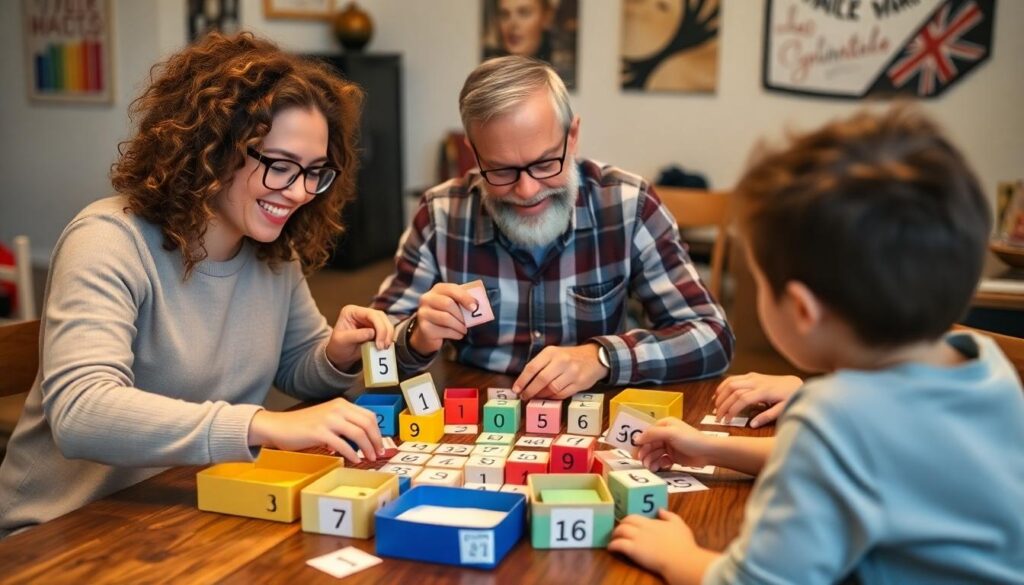Craving a mental challenge that’ll stretch your brain and sharpen your logic skills? Number and letter box riddles might be exactly what you’re looking for! These clever puzzles present sequences of numbers or letters in grid formats, challenging you to decode patterns and identify what comes next.
We’ve gathered some of the most intriguing box riddles that’ll test your pattern recognition abilities and logical thinking. From simple sequences that follow basic arithmetic rules to complex patterns requiring out-of-the-box answers, these puzzles offer something for every level of solving expertise. Ready to put your cognitive abilities to the test and experience the satisfaction of cracking these code-like challenges?
10 Fascinating Number and Letter Box Riddles to Stretch Your Mind
Riddle #1: The Ascending Sequence
2 | 4
6 | ?
This box riddle follows a simple pattern where each number is double the previous one. The sequence starts with 2, then 4, followed by 6, which means the missing number is 8. The pattern follows the rule of doubling the first number in each row to get the second number.
Riddle #2: The Alphabetical Shift
A | C
D | F
G | ?
Letter box riddles often use alphabetical shifts as their core pattern. In this puzzle, each letter on the right is 2 positions ahead in the alphabet compared to its counterpart on the left. Since G is the letter on the left in the third row, the missing letter is I (2 positions after G).
Riddle #3: The Mathematical Operations
3 | 9
4 | 16
5 | ?
This number box riddle applies a squaring operation throughout the sequence. Each number on the right side is the square of its corresponding number on the left. Following this pattern, since 5² = 25, the missing number is 25.
Riddle #4: The Alternating Pattern
B | 2
D | 4
F | ?
Mixing letters and numbers creates intriguing patterns. In this riddle, each letter represents its position in the alphabet (B is 2, D is 4), and the number on the right reflects this position. Since F is the 6th letter in the alphabet, the missing number is 6.
Riddle #5: The Fibonacci Variation
1 | 1
2 | 3
3 | ?
This number box incorporates a Fibonacci-inspired sequence with a twist. The number on the right is the sum of its corresponding left number and the previous right number. Since 3 + 3 = 6, the missing value is 6.
Riddle #6: The Triple Pattern
A B C | D
E F G | H
I J K | ?
Letter box sequences can include multiple letters in each cell. Here, each letter on the right is one position ahead of the last letter on the left. Since K is the last letter in the third row’s left cell, the missing letter is L.
Riddle #7: The Multiplication Series
2 | 6
3 | 12
4 | ?
This number riddle applies multiplication by a constant factor. Each number on the right is the left number multiplied by 3. Since 4 × 3 = 12, the missing number is 12.
Riddle #8: The Vowel Counter
CAT | 1
BEAR | 2
ELEPHANT | ?
Some letter box riddles require counting exact types of letters. In this puzzle, the number represents the count of vowels in the word. Since “ELEPHANT” contains 3 vowels (E, E, A), the missing number is 3.
Riddle #9: The Prime Position
1 | 2
2 | 3
3 | ?
This sophisticated number box riddle uses the position of prime numbers. Each number on the right represents the prime number at the position indicated by the left number. The 1st prime is 2, the 2nd prime is 3, and the 3rd prime is 5, making the missing number 5.
Riddle #10: The Alphanumeric Code
A1 | B2
C3 | D4
E5 | ?
Our final box riddle combines letters and numbers in sequence. The pattern increments both the letter and number by one position. Since E5 is in the third row’s left cell, the missing value is F6, continuing the established pattern.
What Are Number and Letter Box Riddles?
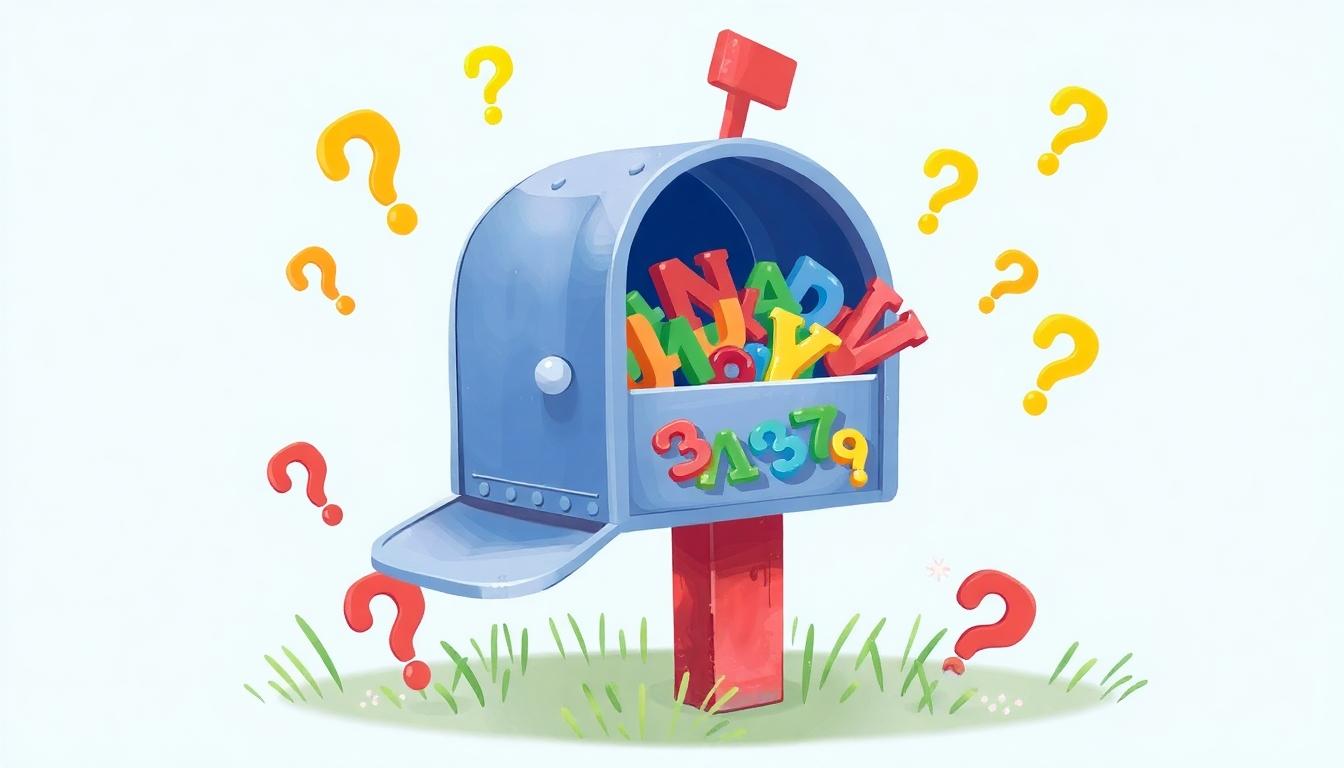
Number and letter box riddles are entertaining puzzles that involve wordplay and logical reasoning centered around boxes containing numbers or letters. These brain teasers frequently feature mailboxes, which naturally incorporate both numerical elements (house numbers) and alphabetical components (mail). A classic example is: “I’m on a post and stay quite still, I love getting letters and am a mailer’s thrill. What am I?” The answer, of course, is a mailbox.
The Origin and History of Box Riddles
While the exact origins of number and letter box riddles aren’t extensively documented, these puzzles have been woven into our cultural fabric for generations. Mailboxes serve as particularly popular subjects for these riddles due to their ubiquitous presence in everyday life. Throughout history, puzzles involving boxes have entertained people across various cultures, though the exact evolution of these particular riddles remains somewhat mysterious. The enduring appeal of box riddles likely stems from their accessibility and connection to common objects we encounter regularly.
How These Puzzles Boost Cognitive Skills
Captivating with number and letter box riddles offers important benefits for mental development across multiple cognitive domains. These puzzles strengthen logical thinking abilities by requiring systematic reasoning to arrive at answers. They also cultivate creative problem-solving skills through their clever use of wordplay and unexpected interpretations of clues.
Solving these riddles demands keen attention to detail, as overlooking even minor elements within the puzzle can prevent finding the correct answer. Regular practice with such brain teasers has been shown to enhance memory retention and mental flexibility. This cognitive workout happens while we’re having fun, making these riddles an enjoyable way to sharpen our minds and exercise our brains through entertainment that challenges our intellect.
Essential Strategies for Solving Number and Letter Box Riddles
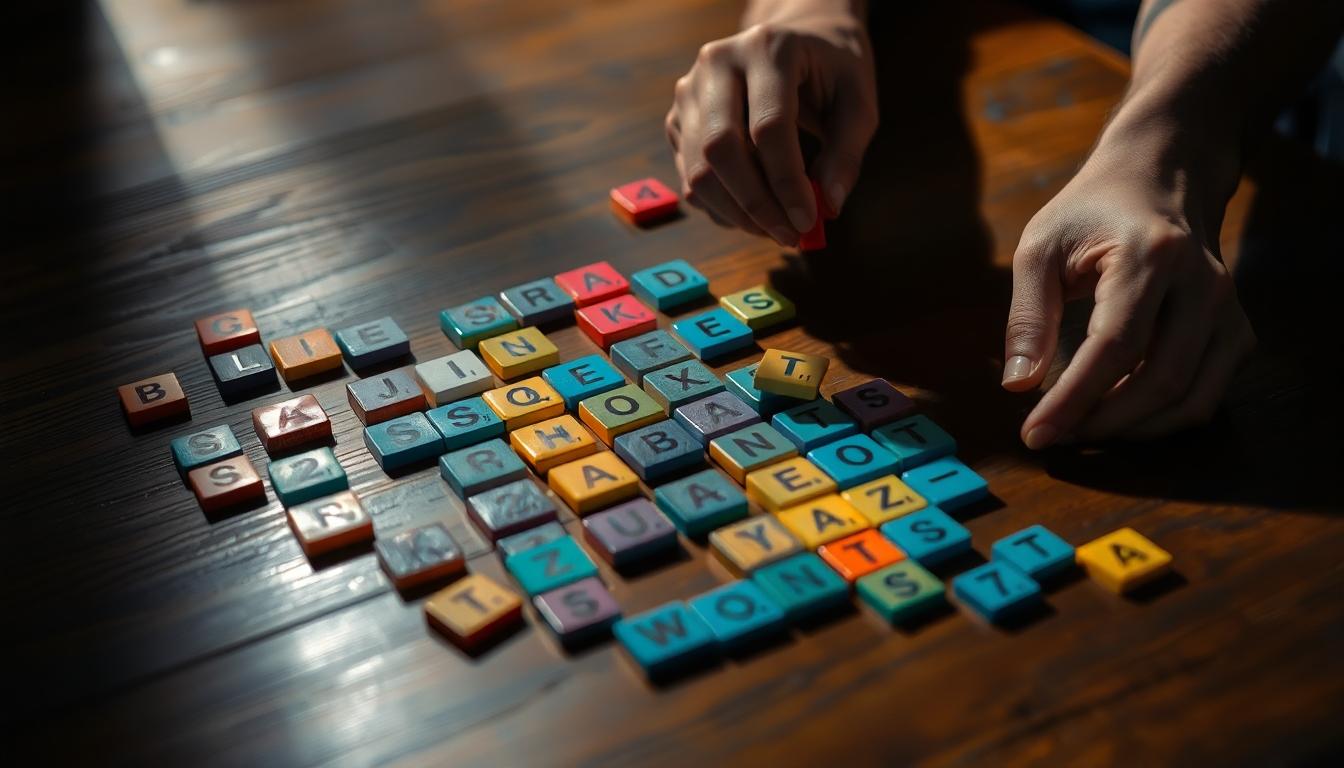
Pattern Recognition Techniques
Mastering pattern recognition is fundamental to cracking number and letter box riddles. We recommend focusing on observation and repetition first, as identifying recurring patterns within the puzzles reveals hidden messages or rules. Look for letters or numbers that appear in exact sequences, as these often hold the key to solving the entire riddle. Sequence analysis should be your next priority – examine how the letters or numbers progress through the puzzle and determine if they follow a exact order such as alphabetical arrangements or arithmetic progressions.
Common Sequence Rules to Know
Familiarizing yourself with alphabetical and numerical sequences will significantly improve your puzzle-solving abilities. The standard alphabet (A-Z) and common number progressions (arithmetic, geometric) frequently appear as the foundation for these brain teasers. Cryptography knowledge proves invaluable when tackling more complex riddles, especially those using substitution methods where letters represent numbers or vice versa. Pay close attention to contextual clues surrounding the riddle, as the puzzle’s presentation often contains hints about the solving approach. Creative thinking remains essential for these challenges – many number and letter box riddles require lateral thinking and unconventional problem-solving techniques to reach the correct solution.
5 Easy Number and Letter Box Riddles for Beginners
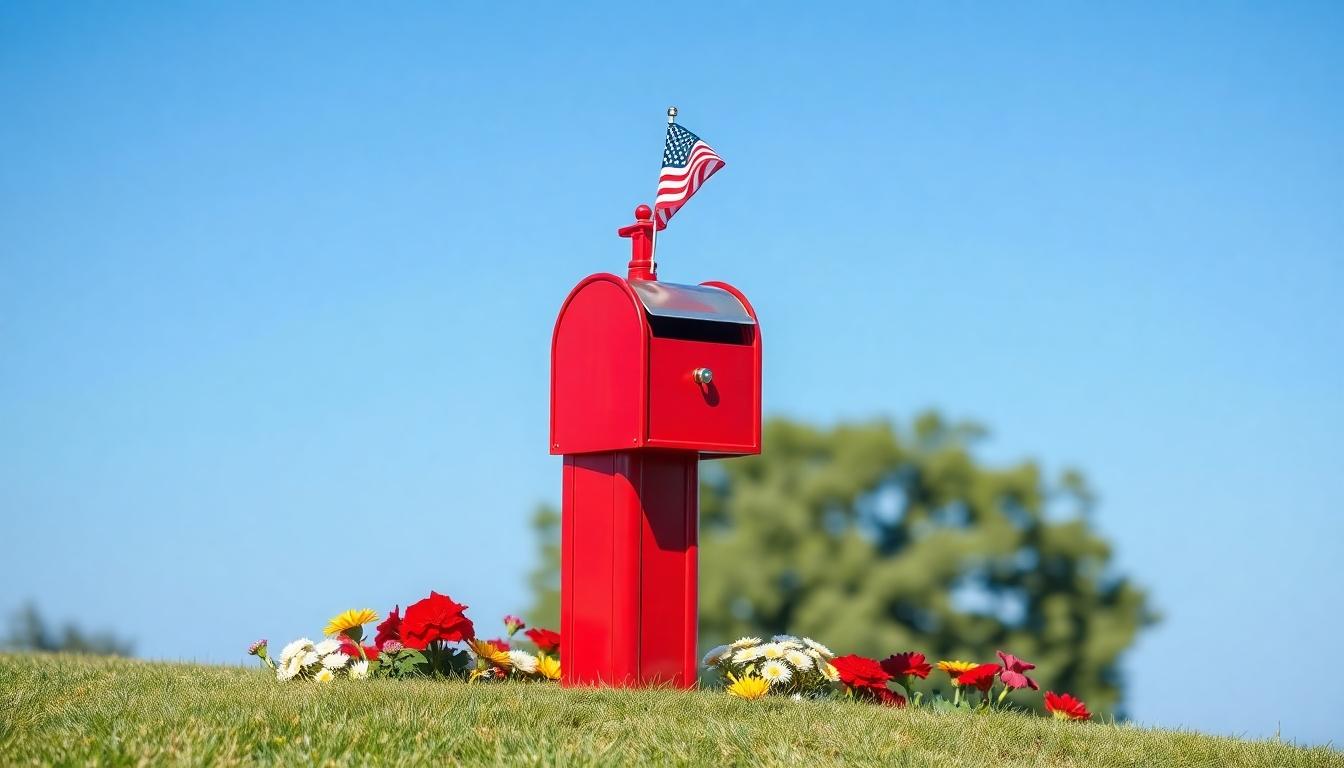
Looking for simple yet captivating brain teasers to sharpen your mind? These five beginner-friendly letter box riddles offer the perfect starting point for puzzle enthusiasts.
- I’m on a post and stay quite still, I love getting letters and am a mailer’s thrill. What am I?
Solution: Mailbox
- Open me up and take a look, I’m where your letters get their nook. What am I?
Solution: Mailbox
- Red or blue, I stand quite tall, I catch your mail when it comes to call. What am I?
Solution: Mailbox
- To drop off notes or bills with ease, I’m the place where mail finds its peace. What am I?
Solution: Mailbox
- With a flag to lift and a slot to see, I’m where your letters are meant to be. What am I?
Solution: Mailbox
Step-by-Step Answers Revealed
Solving letter box riddles becomes straightforward once you know what to look for. First, identify keywords that hint at mailboxes such as “letters,” “post,” or “slot” which frequently appear in these types of puzzles. Pay attention to structural clues in the riddle – physical descriptions like “red/blue,” “flag,” or “door” typically reference real-industry mailbox features. Always eliminate alternative possibilities by recognizing that mail containers have distinctive characteristics separate from other container types like treasure chests or storage boxes.
Tips for Getting Started
We recommend practicing with common themes found in mailbox riddles. Most puzzles in this category use metaphors related to mail delivery, including terms like “letters” and “bills.” Notice repetitive language patterns where words such as “slot” or “post” appear consistently across different riddles. Study existing examples to become familiar with typical phrasing techniques used in these brain teasers. For numerical riddles specifically, understanding sequences is crucial – like the example where house numbers on a street reveal that homeowner #163 would be the first unable to display their house number due to digit limitations in the hardware shop’s inventory.
5 Intermediate-Level Box Puzzles to Challenge Your Skills

Ready to level up your puzzle-solving abilities? We’ve gathered five intermediate-level box riddles that will put your pattern recognition and logical reasoning to the test.
Puzzle #1: The Sequence Box
What number belongs in the empty box?
2 | 5 | 11
6 | 9 | 21
8 | ? | 40
Answer: 17. Each row follows the pattern where the third number equals the first number multiplied by the second number, minus 1.
Puzzle #2: The Letter Shift
Find the missing letter in this sequence:
A | D | G
H | K | N
O | ? | U
Answer: R. Each row follows a pattern where letters advance by 3 positions in the alphabet.
Puzzle #3: The Alternating Pattern
What’s the missing number?
3 | 8 | 4
9 | 4 | 5
7 | ? | 8
Answer: 6. The pattern is: first number + second number = (third number × 3).
Puzzle #4: The Mailbox Code
If a mailbox has the code “421953,” what would be the code for the box next to it based on this pattern: add the two previous digits and take the last digit of the sum?
Answer: 421964. The next digit would be (5+3=8, so 8), followed by (3+8=11, so 1), followed by (8+1=9, so 9), etc.
Puzzle #5: The Letter Box Cipher
Decode this mailbox riddle:
“A box that speaks without a mouth, travels without feet, yet delivers thoughts from hand to hand.”
Answer: A letter. This riddle uses metaphorical language to describe how a letter communicates messages without actually speaking and travels between people without moving on its own.
Hidden Patterns to Watch For
- Mathematical relationships: Many intermediate riddles involve addition, multiplication, or subtraction between numbers in exact positions.
- Alternating patterns: Look for rules that alternate between different operations or sequences.
- Position-based patterns: Sometimes the position (row, column) affects how the pattern works.
- Letter relationships: Watch for alphabetical distance, vowel/consonant patterns, or letter positions in words.
- Directional sequences: Patterns may move diagonally, in spirals, or in other non-linear ways across the grid.
Solution Approaches That Work
- Test multiple hypotheses: Try different mathematical operations between adjacent cells to see what produces consistent results.
- Break down the puzzle: Focus on smaller sections of the grid first to identify localized patterns.
- Work backward: Sometimes starting with the answer and working backward reveals the pattern more clearly.
- Look for anomalies: Often the exceptions to apparent patterns provide crucial clues to the actual rule.
- Apply letter-number conversions: In mixed puzzles, converting letters to their numerical positions in the alphabet (A=1, B=2, etc.) can reveal hidden mathematical patterns.
- Draw out the sequence: Visualizing the entire sequence sometimes makes patterns more apparent than just looking at the given segments.
5 Advanced Number and Letter Box Riddles for Puzzle Masters
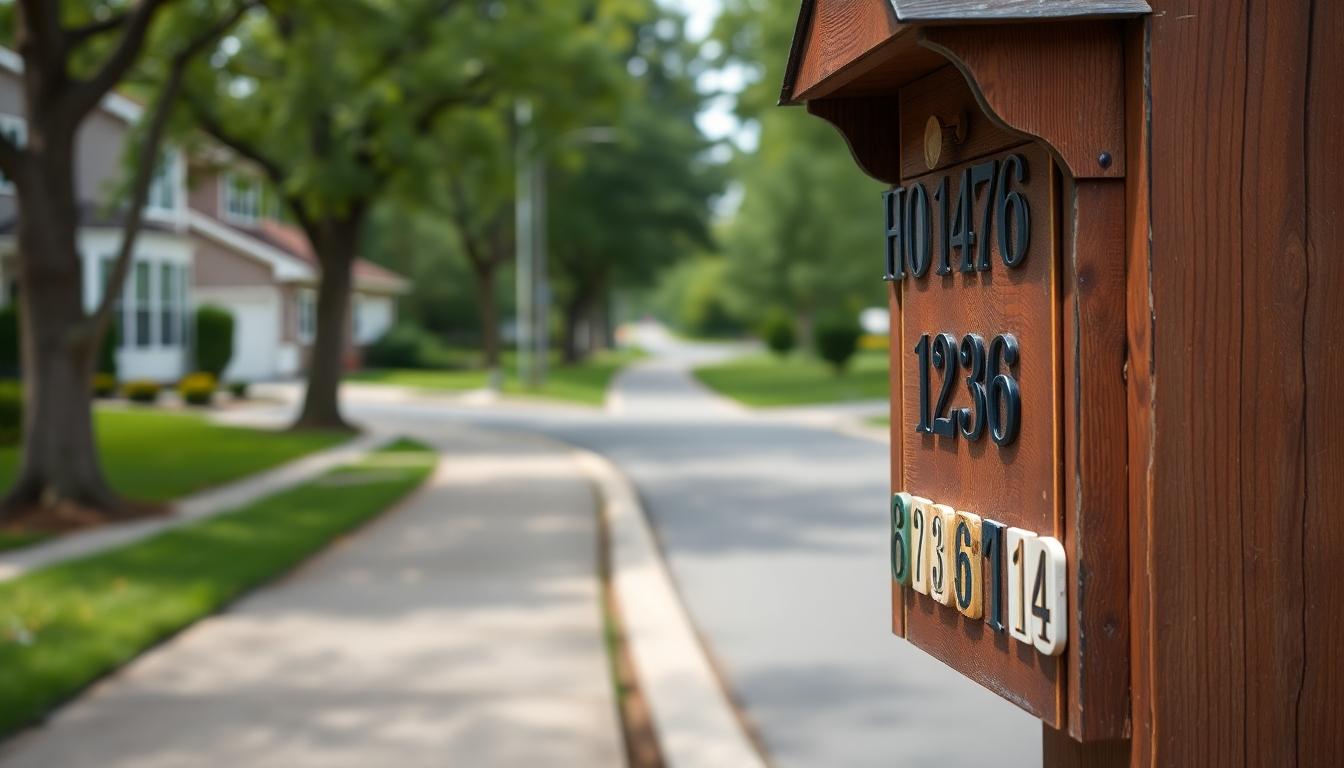
Ready to push your mental limits? These advanced number and letter box riddles will challenge even the most seasoned puzzle enthusiasts with their complex sequences and multi-step answers.
1. Sequence Riddle
This letterbox numbering puzzle requires careful digit counting: A street has houses numbered sequentially (1, 2, 3…) with digits 0-9 used for letterbox numbers. Each digit can only be used 100 times. Which homeowner will first be unable to get their full house number?
Answer: Homeowner 163 cannot get their complete number. The digit “1” gets used up after 100 appearances in houses 1-99, another 32 uses for houses 100-119, and 44 more uses for houses 120-159, leaving only four “1”s for houses 160-162.
2. Mathematical Letterbox Identification
Count carefully in this digit-tracking challenge: If you paint the numbers 1 through 100 on letterboxes, how many times will you use the digit “8”?
Answer: The digit “8” appears 20 times total. This includes the number 8 itself, plus numbers 18, 28, 38, 48, 58, 68, 78, 80, 81, 82, 83, 84, 85, 86, 87, 88, 89, and 98.
3. Letterbox Digit Constraints
This constraint-based puzzle tests your understanding of numbering systems: If the digit “0” cannot be used in letterbox numbering on a street, what would be the first house number requiring a digit that’s unavailable?
Answer: House number 100 would be the first impossible number to represent without using the digit “0”.
4. Multi-Step Mailbox Puzzle
This riddle requires tracking exact digit usage: Letters arrive in a box with a flag. At position “X,” its number uses three “1”s. Find the lowest X greater than 100.
Answer: The answer is 111. Each digit position contains a “1”, giving a total of three “1”s in the number.
5. Recursive Digit Counting
Apply your digit-counting skills to this challenging problem: A street uses house numbers from 1 to 200. How many times does the digit “1” appear in total across all house numbers?
Answer: The digit “1” appears 140 times in total. This breaks down as 20 appearances in numbers 1-99, 120 appearances in numbers 100-199, and none in 200.
Complex Sequences Explained
Understanding how digits distribute across number sequences is key to solving these advanced riddles. Digit exhaustion occurs when sequential numbering depletes the available quantity of certain digits. For instance, the usage of “1”s increases dramatically in the 100-199 range because every number in this range contains at least one “1” in the hundreds place. This pattern recognition allows puzzle solvers to predict when certain digits will become unavailable.
Multi-digit analysis requires breaking down the problem into manageable segments. By analyzing how frequently each digit appears within exact ranges (such as 1-99 or 100-199), you can systematically count total digit usage without having to list every individual number.
Multiple-Step Solution Strategies
Group counting provides an efficient approach to these complex riddles. Divide number ranges into logical groups (like 1-99, 100-199) to count digit frequencies systematically rather than tallying each number individually. This technique dramatically reduces calculation time and potential errors.
Recursive patterns allow you to build on established counting rules. For example, knowing that the digit “8” appears 20 times in numbers 1-100 provides a foundation for calculating its frequency in larger ranges. These pattern-recognition shortcuts are essential for tackling advanced letterbox riddles without getting overwhelmed by the calculations.
How to Create Your Own Number and Letter Box Riddles

Creating your own number and letter box riddles can be both fun and intellectually stimulating. We’ve compiled essential techniques to help you create captivating puzzles that challenge and entertain your audience.
Identify the Theme
Focus your riddle around popular themes like mailboxes or letterboxes. These familiar objects provide a concrete foundation for your wordplay and make the riddle more accessible to solvers. For instance, consider how mail is delivered, stored, and collected when crafting your clues.
Wordplay and Metaphor
Use clever wordplay or metaphors to describe your object in ways that hint at the solution without being too obvious. Phrases like “I’m on a post and stay quite still, I love getting letters and am a mailer’s thrill” effectively describe a mailbox while maintaining the puzzle element.
Misdirection
Incorporate strategic misdirection to increase the challenge level of your riddle. This technique diverts attention from the obvious answer, making solvers work harder to arrive at the solution. Careful misdirection keeps puzzles captivating without making them impossible to solve.
Basic Formula for Puzzle Creation
The most effective riddles follow a three-part structure that guides solvers toward the solution:
- Set Up: Establish the context for your riddle, introducing the subject indirectly. This initial framing helps solvers begin thinking in the right direction.
- Hint: Provide subtle but meaningful clues that narrow down possible answers. These hints should be exact enough to be helpful but vague enough to maintain the challenge.
- Payoff: Conclude with elements that lead directly to the answer, tying together previous clues in a satisfying way. This final component should create an “aha” moment when the solver discovers the solution.
Testing Your Riddles for Solvability
Creating a great riddle requires finding the perfect balance between challenge and solvability. Follow these steps to refine your puzzles:
- Share with Others: Test your newly created riddles on friends or family members who weren’t involved in the creation process. Their fresh perspective will help you gauge whether the difficulty level is appropriate.
- Feedback Loop: Collect exact feedback about what worked and what didn’t. Pay attention to which clues were helpful and which created confusion. Use this information to refine your riddles, simplifying overly complex elements without making the solution too obvious.
Tips for Effective Riddles
- Clarity: Ensure your language is clear and concise, avoiding unnecessarily complex vocabulary or convoluted sentences that might frustrate solvers.
- Creativity: Incorporate unexpected twists or unique descriptions to make your riddles stand out. Fresh perspectives on familiar objects make for memorable puzzles.
- Constructive Feedback: Remain open to suggestions and criticisms that can improve your riddles’ solvability and enjoyment factor. The goal is to challenge solvers while still providing a satisfying solution experience.
Online Resources for Number and Letter Box Riddle Enthusiasts

Finding quality resources for number and letter box riddles can significantly enhance your puzzle-solving journey. We’ve compiled the best online platforms where enthusiasts can discover, solve, and discuss these brain-teasing challenges.
Top Websites and Apps
- Riddles Academy offers specialized sections dedicated to number and letter box riddles, including mailbox-themed puzzles like “I’m on a post and stay quite still…” alongside various logic puzzles featuring numerical patterns.
- RiddlesTwist presents a range of mailbox riddles from beginner to advanced levels, with many focusing on letter and number themes such as “Red or blue, I stand quite tall…”
- Puzzle a Day specializes in numerical puzzles connected to real-industry scenarios, including fascinating challenges about house-numbering sequences like “A new street with hundreds of houses…”
- Bored Panda features captivating number riddles such as “What can you put between 7 and 8…” complemented by interactive math-based challenges like the classic snail-in-a-pit puzzle.
- Riddle Tower app available on Play Store blends numerical and word-based puzzles, making it a convenient mobile option for puzzle enthusiasts looking to practice on the go.
Online Communities and Forums
While dedicated communities specifically for number and letter box riddles are somewhat limited, several general puzzle platforms host active discussions about these brain teasers. Reddit’s r/riddles subreddit frequently features mailbox and number-based riddles, allowing users to both post new puzzles and help solve existing ones.
Quora threads often contain detailed discussions about exact mailbox and number sequence riddles, with puzzle experts providing multiple solution approaches. Many riddle websites like Riddles Academy foster user engagement through comments sections where visitors can share alternative answers or ask for hints.
These online communities provide valuable opportunities to connect with fellow enthusiasts, receive feedback on your own riddle creations, and discover new puzzle-solving techniques that might not be immediately obvious when tackling these challenges alone.
How Number and Letter Box Riddles Compare to Other Logic Puzzles

Number and letter box riddles occupy a fascinating middle ground in the industry of logic puzzles, sharing traits with other popular brain teasers while maintaining their own distinct characteristics.
Similarities with Sudoku and Crosswords
Pattern recognition serves as a fundamental skill across these puzzle types, with Sudoku requiring players to identify numerical sequences similar to how number box riddles demand analysis of digit usage patterns. For example, tracking the frequency of the digit “1” in house numbers before supplies run out mirrors the systematic approach needed in Sudoku grids. Logic and deduction form another common thread, as crosswords rely on contextual clues in much the same way letter box riddles employ wordplay like “I hold your letters, young and old” to lead solvers to “mailbox” as the answer. Structural constraints appear in all these puzzle forms, with Sudoku’s grid rules paralleling the limitations found in number box puzzles where finite quantities of digits force logical prioritization of resources.
Unique Aspects of Box Riddles
Box riddles stand apart through their hybrid elements, seamlessly blending numerical logic (such as calculating cumulative digit usage) with linguistic creativity (using metaphors like “a slot to slide, a door to lift”). Real-industry anchoring distinguishes these puzzles from abstract games like Sudoku, as box riddles frequently reference tangible objects like mailboxes, connecting the challenge to everyday scenarios we can visualize. Progressive complexity characterizes many box riddles, which often escalate from simple metaphorical clues (“I stand quite tall”) to multi-step calculations that determine when digit inventories become depleted. Minimalist design represents another distinctive feature, with many box riddles resolving instantly once the core concept clicks, unlike the prolonged solving sessions typical of crosswords or Sudoku puzzles. These riddles effectively bridge the gap between mathematical rigor and verbal wit, appealing to enthusiasts from both domains.
Incorporating Number and Letter Box Riddles into Daily Life
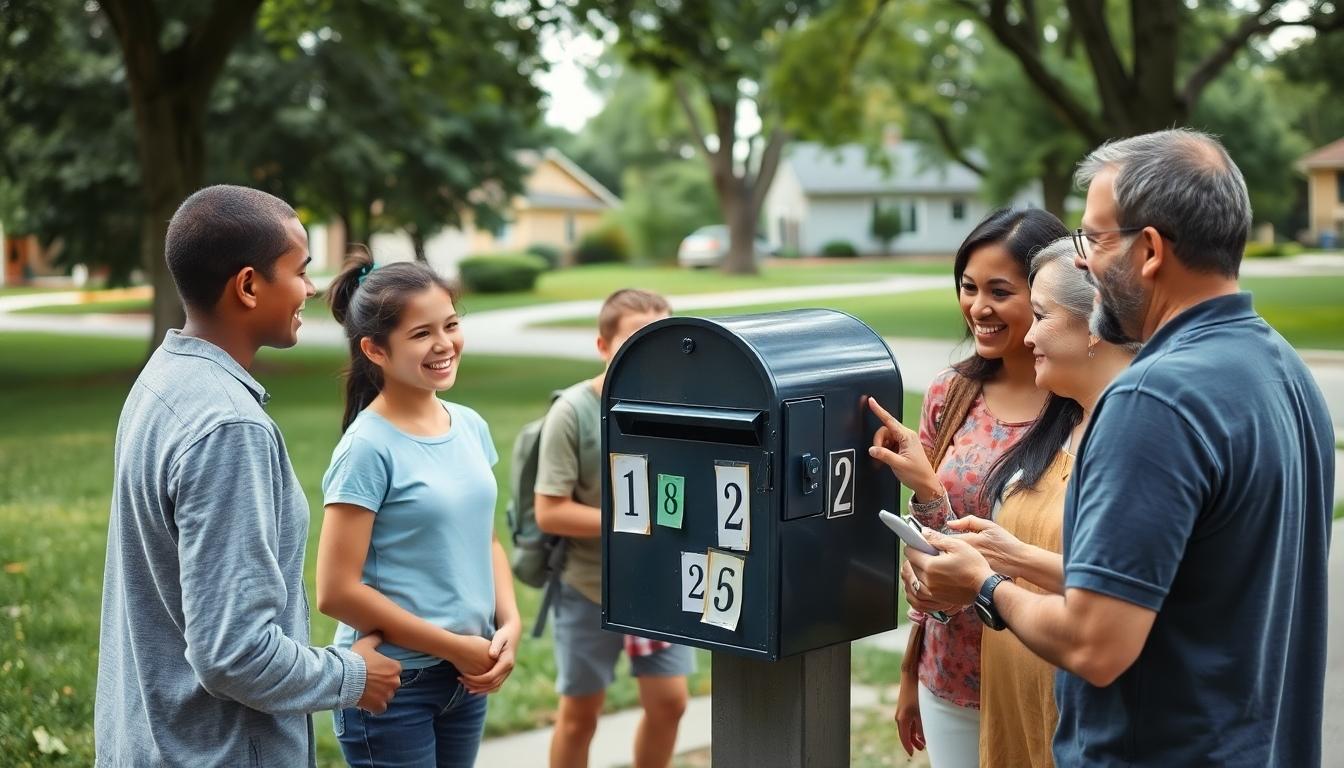
Educational Tools
Number and letter box riddles serve as powerful educational resources in classroom settings. Teachers can integrate puzzles like “I’m a number and a slot, a place where letters are caught” (answer: numbered letterbox) to enhance pattern recognition and logical reasoning skills. We’ve found these riddles particularly effective in math lessons where they illustrate real-industry applications of digit frequency and combinatorics. For instance, the homeowner problem asking which house will run out of exact digits first (answer: house 163) can make abstract mathematical concepts tangible for students while boosting their critical thinking abilities.
Family Activities
Transforming daily family routines with number and letter box riddles creates captivating bonding opportunities. Families can compile these puzzles into daily challenges, perhaps solving one mailbox-themed riddle during dinner each evening. Consider using examples like “With a flag to lift and a slot to see, I’m where your letters are meant to be” (answer: mailbox) to spark conversation and friendly competition. These collaborative puzzle-solving sessions encourage teamwork while simultaneously developing essential problem-solving skills in children and adults alike.
Community Engagement
Neighborhood connections thrive when communities organize scavenger hunts using letterbox number clues. Local groups can create captivating outdoor activities by linking riddles to physical mailboxes with hidden numbers or messages. These community-based puzzle adventures foster social interaction between neighbors while providing a fun, intellectually stimulating activity that gets people outside and exploring their surroundings together. The collaborative nature of these events strengthens community bonds through shared problem-solving experiences.
Cognitive Benefits
Regular practice with number and letter box riddles delivers substantial mental fitness advantages. Working through challenges involving numerical constraints or letter-based pricing systems enhances memory function, improves attention to detail, and strengthens arithmetic skills. We’ve observed that incorporating these puzzles into daily routines, even for just a few minutes, helps maintain cognitive sharpness and mental flexibility. The varied complexity levels of these riddles make them accessible for continuous intellectual growth regardless of one’s starting skill level.
Conclusion: Why Number and Letter Box Riddles Remain Timeless Challenges
Number and letter box riddles offer more than just entertainment—they’re gateways to sharper thinking and enhanced cognitive skills. From beginner-friendly mailbox puzzles to advanced numerical challenges we’ve explored throughout this guide these brain teasers adapt to every skill level.
By incorporating these riddles into education family activities or daily mental workouts we can all benefit from improved pattern recognition logical reasoning and memory function. The blend of mathematical logic with linguistic creativity makes these puzzles uniquely satisfying.
Ready to challenge yourself? Start with our beginner riddles then work your way up or create your own puzzles to share. Your brain will thank you for the workout and you’ll join a community of enthusiasts who’ve been enjoying these timeless challenges for generations.
Frequently Asked Questions
What are number and letter box riddles?
Number and letter box riddles are brain-teasing puzzles that involve sequences of numbers or letters presented in grids. They challenge you to identify patterns and predict what comes next. These puzzles often relate to mailboxes or other box-like objects and combine numerical logic with wordplay to test your problem-solving abilities.
How do number and letter box riddles benefit the brain?
These riddles strengthen multiple cognitive skills simultaneously. Regular practice improves logical thinking, creative problem-solving, attention to detail, memory retention, and mental flexibility. They provide an enjoyable way to exercise your brain while developing pattern recognition skills that can transfer to real-world situations.
What strategies help solve number and letter box riddles?
Focus on pattern recognition by carefully observing the sequence for repetition or relationships. Analyze the order of elements and become familiar with common alphabetical and numerical sequences. Look for contextual clues, employ creative thinking, and be willing to consider unconventional solutions. Breaking complex puzzles into smaller parts also helps.
Are there different difficulty levels for these riddles?
Yes, these riddles range from beginner to advanced levels. Beginner riddles typically involve simple patterns like doubling numbers or basic alphabetical shifts. Intermediate puzzles incorporate alternating patterns or combined operations. Advanced riddles feature complex sequences, multi-step solutions, and may require understanding concepts like digit distribution or recursive patterns.
How can I create my own number and letter box riddles?
Start by identifying a theme and incorporate clever wordplay or metaphors. Use misdirection to make the puzzle challenging but fair. Follow a basic formula: setup, hints, and payoff. Test your riddle with others to ensure it’s solvable and gather feedback to refine the difficulty level and clarity of clues.
Where can I find more number and letter box riddles online?
Websites like Riddles Academy, RiddlesTwist, Puzzle a Day, and Bored Panda offer extensive collections. Mobile apps such as Riddle Tower provide on-the-go challenges. Online communities including Reddit’s r/riddles and Quora have active riddle enthusiasts who share new puzzles and discuss solutions regularly.
How do box riddles compare to other logic puzzles like Sudoku?
While both require pattern recognition and logical deduction, box riddles uniquely blend numerical logic with linguistic creativity. Unlike Sudoku’s rigid structure, box riddles often reference tangible objects and feature progressive complexity. Their minimalist design makes them accessible to both mathematical and verbal thinkers.
Can number and letter box riddles be used in educational settings?
Absolutely! These riddles make excellent educational tools in classrooms to develop pattern recognition and logical reasoning. Teachers use them to reinforce mathematical concepts and language skills while maintaining student engagement. They’re particularly effective for demonstrating practical applications of abstract thinking principles.

